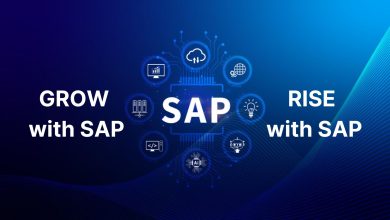What’s Next on the Horizon for Telecommunications Service Providers?

By Chris Wright, Chief Technology Officer and Senior Vice President, Global Engineering, Red Hat
 What’s top of mind for service providers? What should the whole telecommunications industry be prepared for? What will the broad ecosystem need to do to make visions a reality? While it’s impossible to provide a complete answer to all of these questions – the telecommunications industry is vibrant and ever changing – there are numerous compelling projects underway that I think are worth exploring.
What’s top of mind for service providers? What should the whole telecommunications industry be prepared for? What will the broad ecosystem need to do to make visions a reality? While it’s impossible to provide a complete answer to all of these questions – the telecommunications industry is vibrant and ever changing – there are numerous compelling projects underway that I think are worth exploring.
AI still leads the conversation
As we navigate 2024, the adoption of artificial intelligence (AI) is poised to reach new heights, transforming industries and reshaping business landscapes. The distributed nature of telecommunications networks, along with data gravity and data sovereignty, creates an opening for AI to help navigate complexity and automate network lifecycles more efficiently. Now, service providers will be able to leverage AI models within networks. For example, think about radio access networks (RAN) – service providers can leverage AI models in the RAN and core for a more dynamic control of frequencies, sectors, cells and base stations to go beyond just time-of-day presets. AI will also help to simplify and streamline operations with real-time root cause analysis for reduced mean time to repair.
Additionally, blurred boundaries between network cloud, core, edge and IT are driving service providers to embrace a holistic approach that unifies management practices and leverages shared technologies. These include AI, ML, AIOps and generative AI.
Predictive and generative AI are expected to play a big role in increasing developer productivity. It’s still too early to determine just how AI will work in this context and what organizations will need to do to support security, privacy and compliance requirements, but we see a future where there is an AI code assistant sitting beside developers through every stage of the development cycle.
Service providers will be paying extra attention to systems security and risk management
Service providers’ disaggregated networks and IT transformation create well-defined layers using cloud native design principles. This is an opportunity to think holistically about a defense in depth, or security at every layer, that starts within the hardware, extends up through the platform software and protects applications right where they expose an interface which extends the attack surface. This balances an increased focus on security while maintaining agility and enables simplification of the diverse and sometimes overlapping security tools by bringing security natively into each layer.
Cybersecurity and resilience extend beyond reactive protection to proactive protection that includes supply chain and automation for preparedness, response and recovery when incidents occur. While the fundamentals remain unchanged, the new architectures, business models, and operational paradigms enable this comprehensive and proactive approach to systems security and risk management.
Striving to balance market momentum and risk, service providers will look to SaaS and on-demand offerings from hyperscalers and software vendors to accelerate innovation before deployment of these capabilities at scale. Service providers have negotiated large committed spend agreements with multiple cloud providers, primarily for digital business applications. They are also considering these providers for modernized operation and business support systems (OSS/BSS) as well as specific network use cases with additional caution, given service providers’ requirements for operational efficiency, security, span of control and economics at scale. One way to address these requirements is with a hybrid cloud application platform (such as Red Hat OpenShift) to provide consistency across any cloud. Many service providers will attempt to build the elasticity and scale of public cloud capabilities into their own environments and may also choose to build specific MEC and edge offerings through various partner arrangements to pursue geographic and industrial solution opportunities.
Sustainability is still top of mind
The telecommunications industry’s present share of 2% to 3% in global power consumption and data centers utilizing approximately 2% of the world’s energy underscore its significance. Service providers allocate a substantial 20% to 40% of operating costs towards energy expenses. The convergence of rising traffic demands, increased energy prices, and ambitious sustainability targets presents a formidable challenge. In the era of cloud computing, sustainability permeates various facets, influencing system architecture from chip design to application development and radio access networks.
In order to increase their reliability at scale while improving their net carbon footprint, service providers will look to meter and automate the measurement and control of their power consumption and cooling using innovative hardware, software and AI models – especially in the RAN but also in their core, datacenter and hybrid cloud deployments.
Growing revenue and reducing operational costs remain critical concerns
Service providers are facing significant capex and opex challenges as they continue to invest to remain competitive on:
- Modernizing legacy IT and network capabilities
- Expanded fiber reach
- 5G core networks for new service offerings
- Expanding RAN footprints for better performance
With these initiatives and challenges in mind, the focus for service providers will be to embrace intelligent automation and AI technologies. The end goal is to improve overall business and operational efficiency across network, security, infrastructure and applications in a hybrid/multi-cloud environment.
Reducing operational expenditure, fueled by increasing interest rates, which make it very expensive for service providers to secure capital for new projects as well as serve existing obligations with existing network equipment. The imperative to cut costs is viewed as vital for unlocking funds to support new investments.
There will be greater collaboration between manufacturers and service providers with the rise of private 5G networks and edge computing
At Red Hat’s Open5G event, Yesmean Luk, private networks practice lead at STL Partners, said, “private networks and edge computing are two inextricably linked technologies that are poised to improve the performance of applications and enable huge amounts of data to be processed in real time.”
Service providers are perfectly positioned to help manufacturers handle the massive increase in the volume of machine generated data. This can lead to faster decision making, more secure and reliable connectivity, analytics, AI-enabled applications/services and more. Video cameras, robotics, conveyor belts and a host of other remote devices can all connect through private 5G wireless networks, and each device has an edge application with an embedded AI/ML model that helps in inferencing and making quick decisions.
Demand for cloud flexibility will grow
Following a period of rapid cloud migrations to achieve improved economics, service providers have gained a nuanced understanding of the actual costs associated with operating across multiple clouds. This awareness, coupled with new regulatory requirements and evolving business strategies, prompts a reevaluation of cloud strategies. While there is no wholesale shift away from public cloud adoption (due to economic advantages), a nuanced continuation is anticipated. The spotlight is on workload flexibility to mitigate fragmentation and align with changing regulatory, financial, operational, and business key performance indicators (KPIs).
For 2024, the service provider landscape promises to be a dynamic one, marked by significant opportunities. At Red Hat, we eagerly anticipate navigating this terrain alongside our valued customers, helping to address rising costs, an evolving gallery of cybersecurity threats, and a boom in IT innovation.




